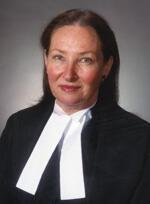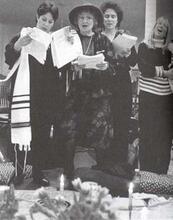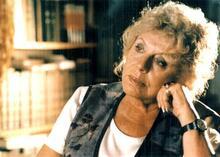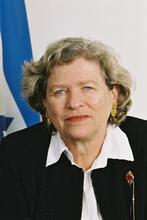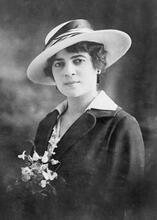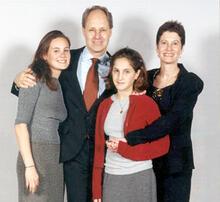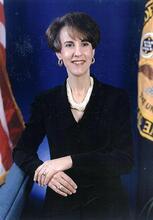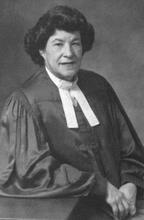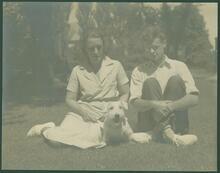Birdie Amsterdam
Birdie Amsterdam was the first woman elected to the New York State Supreme Court. Amsterdam studied banking and accounting at City College and went to New York University Law School while working in the accounting department at Mount Sinai Hospital. After graduating, she practiced independently before forming a partnership with her sister’s husband. In 1939 she was New York’s first female municipal court judge. In 1954, she was the first woman appointed to the city court, and in 1957, she was elected to the state Supreme Court. She also volunteered for various organizations and causes, such as running a bond drive during World War II and serving as Tammany Hall district co-leader of the Manhattan Democratic Club.
Article
Birdie Amsterdam was the first woman elected to the New York State Supreme Court. Justice Saul Streit, chair of the Board of Justices, described the fifty-six-year-old judge as the “first lady of our judiciary” when he administered the oath to her on January 6, 1957. Amsterdam later declined a seat on the appellate court, preferring to remain a trial judge, hearing predominantly civil cases. Occasionally, she sat in criminal court. She was reelected to a second fourteen-year term and served until 1976.
Born March 25, 1901, on the Lower East Side of Manhattan, where she lived the rest of her life, Birdie Amsterdam was the second child and first daughter of Joseph and Essie (Sperling) Amsterdam’s six children. Joseph Amsterdam was a classical trumpet player who made a living in the fur business. She had three brothers, Alton and Bernard, who became doctors, and Irving, who was a pharmacist. Her sister Ruth became a nurse, and her sister Sybil Chizner also became a lawyer. The family belonged to a Conservative synagogue.
After completing Hunter College High School, Amsterdam went to City College in 1918–1919 to study banking and accounting. She worked during the day in the records and accounting department of Mount Sinai Hospital and went to New York University Law School at night, graduating with an LL.B. in 1922. Admitted to the bar in 1923, she set up an independent practice and, in 1935, she formed a partnership with Milton Sanders, her sister Ruth’s husband. The law firm of Amsterdam and Sanders lasted until 1939, when she went on the municipal court bench.
Amsterdam was an experienced jurist when she was seated on the state supreme court bench in 1957. She was the first woman to sit on the municipal court bench, serving from 1940 until 1954, and in 1954 she became the first woman appointed to the city court. In the election of 1955, the Democratic Party swept the judiciary, and she was elected to a full term on the city court.
Her professional and volunteer activities were lifelong and wide-ranging. She took a leadership role in bar associations, as well as religious, educational, and charitable organizations. During World War II, she led the Lower East Side war bond drive. She was a Democrat and a Tammany Hall district co-leader of the Manhattan Democratic Club. A gifted speaker, she traveled some but was wholly dedicated to the law and the legal profession. Her career was her life.
Amsterdam’s brief marriage to Dr. Robert Dunn ended in divorce. For many years she lived with Ruth and Judge Milton Sanders. Ever devoted to and admired by her family and community, she was ninety-five when she died of cardiac arrest in New York City on July 8, 1996. She is buried in Mount Zion Cemetery, in Queens, New York.
Judge Birdie Amsterdam was an exemplary jurist. Her thirty-six years on the bench dispelled any doubt as to a woman’s judicial temperament and ability to dispense justice and maintain the rule of law.
NYTimes, November 9, 1955, January 7, 1958, and July 10, 1996.
Sanders, Milton, and Ruth Sanders. Interviews with author, June 1996.
Thomas, Dorothy. Women Lawyers in the United States (1957).

